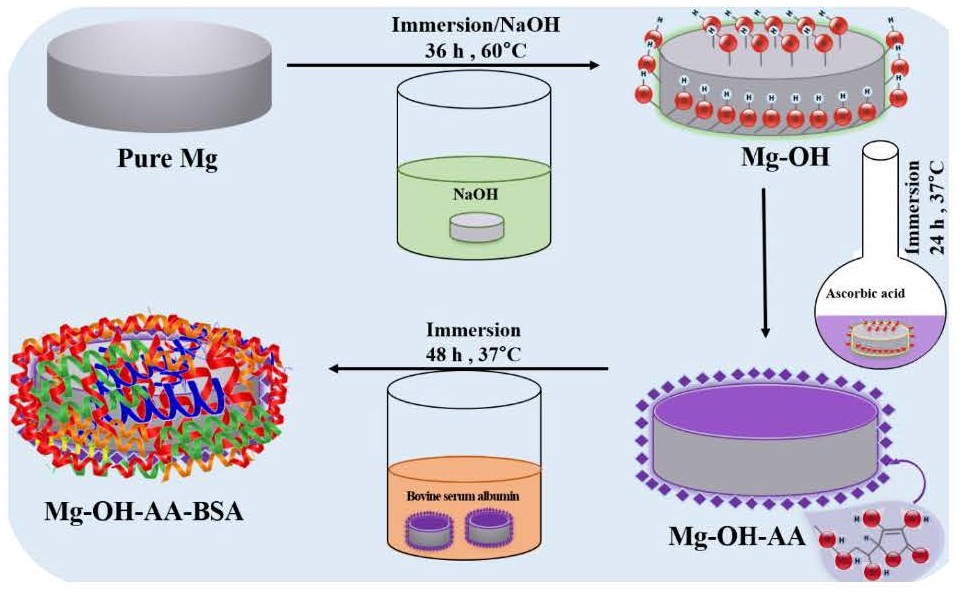Herein, we describe precisely on covalent modification of pure magnesium (Mg) surface and applied to induce in vitro osteogenic differentiation. A new concept, chemical bonding method is proposed for developing stable chemical bonds on Mg surface through serial assembly of bioactive additives including ascorbic acid (AA) and bovine serum albumin (BSA). The coating with such potential materials shows strong integrity to the Mg and could suitable for cell-interface interaction with the host tissue during implantation in bone tissue repair. The physicochemical and electrochemical properties of surface modified Mg assess how these nanoscales layered of biomolecules could demonstrate the significance improvement in chemical stability of coating. The modified Mg-OH-AA-BSA exhibits better anti-corrosion behavior with high corrosion potential (Ecorr ~ ‒ 0.96 V) and low corrosion current density (Icorr ~ 0.2 µA cm-2) as compared to pure Mg (Ecorr ~ ‒1.46 V, Icorr ~ 10.42 µA cm-2). Outer layer of BSA on Mg protects fast degradation rate of Mg which is the consequence of strong chemicals bonds between amine groups on BSA with carboxylic groups on AA. Collectively, the results suggest that surface modified Mg provides strong bio-interface and enhances the proliferation and differentiation of pre-osteoblast (MC3T3-E1) cells through protein-lipid interaction. Owing to this fact, the cost-effective and scalable covalent functionalization of Mg surface inherits biological advantage in orthopedic and dental implants with long term stability.

